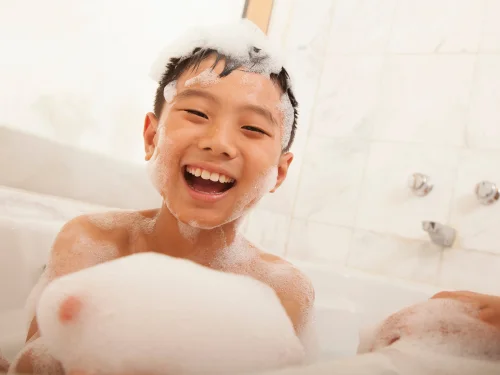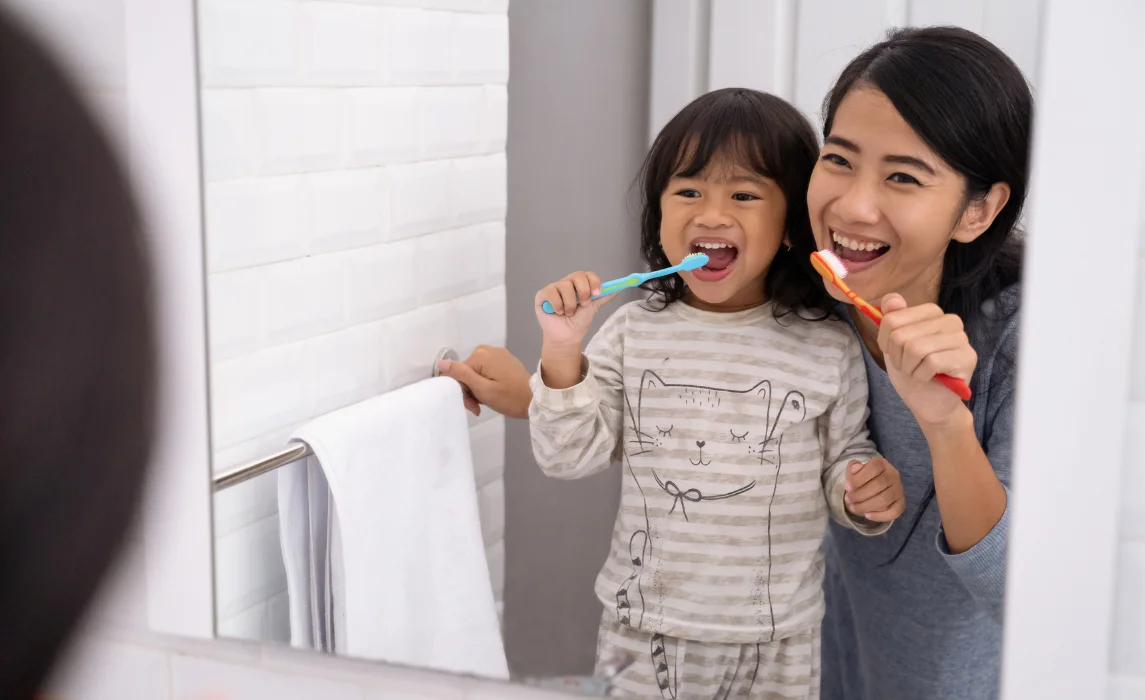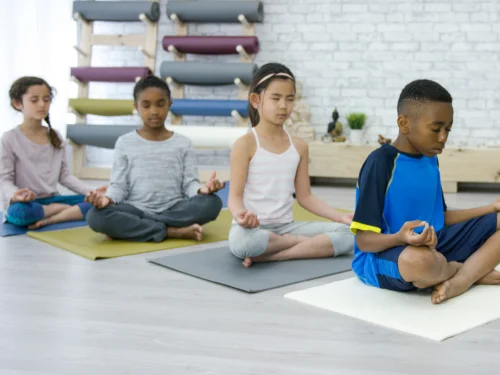Personal Hygiene for Kids: 10 Simple Habits for a Healthy, Confident Child

Yes—finger plays, clapping games, and dance routines that use hand gestures all help. Combine rhythm and repetition for deeper learning.
Send home simple activity ideas, kits, or worksheets. Offer short instructions and encourage family involvement. Regular practice builds lasting progress.
Try origami, sticker scenes, stringing pasta, or painting with Q-tips. Crafts that use small pieces build precision and control.
Personal hygiene means keeping your body clean to stay healthy and prevent sickness. For kids, this includes washing hands, brushing teeth, taking baths, wearing clean clothes, trimming nails, and covering coughs and sneezes. These habits protect against germs and help kids feel more confident at school, during play, and around friends.
Personal hygiene is more than just cleanliness—it’s also about self-care, independence, and building lifelong healthy routines. When children understand why hygiene matters, they start taking ownership of their daily habits.
Why Personal Hygiene Is Important

Clean habits protect children from illnesses like colds, flu, and stomach bugs. Germs spread quickly through unwashed hands, shared toys, and dirty clothes. Good hygiene prevents these problems before they start.
But hygiene isn’t just about health—it also helps kids feel fresh and confident. A child who smells clean, wears neat clothes, and has bright teeth feels more comfortable and self-assured in social settings. Teaching these habits early helps them grow into healthy, confident adults.
The Everyday Hygiene Habits (Kid-Friendly Guide)
.webp)
Building good hygiene routines helps children stay healthy, confident, and independent. These everyday habits may seem small, but they make a big difference in preventing sickness and promoting self-care. Here are the most important hygiene practices every child should learn — explained in simple, easy-to-follow ways.
1) Handwashing (20 Seconds of Power!)
Handwashing is the number one way to stop germs from spreading. Kids use their hands all day — touching toys, food, pets, and even their faces — so washing them regularly keeps harmful germs away. It’s a quick and powerful step to prevent colds, flu, and tummy bugs.
When to wash: after using the toilet, before eating or cooking, after coughing/sneezing/blowing the nose, after touching animals, and whenever hands look or feel dirty.
How to wash properly:
Wet hands → add soap → rub palms, backs, between fingers, and under nails for 20 seconds (sing “Happy Birthday” twice) → rinse → dry completely.
2) Bathing or Showering
A clean body helps children feel fresh, comfortable, and confident. Bathing removes sweat, dirt, and bacteria that cause body odor or skin irritation. It also relaxes kids before bedtime, making it a healthy part of their daily routine.
How often: regularly; many families include a bath or shower at night.
Don’t forget: underarms, between toes, private parts, neck, behind ears (outer only), and belly button. Dry skin well before putting on clean clothes.
Safety tip: An adult should always supervise young children in the bath to prevent accidents.
3) Teeth Care (Brush + Floss = Bright Smile!)
Healthy teeth help kids eat, talk, and smile with confidence. Tooth decay and gum problems can start early if proper brushing isn’t taught — so it’s best to begin as soon as the first tooth appears.
Brush: twice a day — in the morning and before bed — using a pea-sized amount of fluoride toothpaste.
Floss: once daily when teeth begin touching.
Help needed: Most children need an adult’s help until about age 8 to ensure all teeth are properly cleaned.
Check-ups: Visit the dentist at least once a year to prevent cavities and keep teeth strong.
4) Toilet Hygiene
Learning proper toilet hygiene helps children stay clean and prevents infections. It also builds independence and self-care skills that they’ll carry into school and beyond.
Skills to practice:
- Wipe front to back until the paper is clean.
- Flush the toilet after each use.
- Wash hands thoroughly every time.
- Wear clothes that are easy to pull up and down for confidence and comfort.
5) Hair Care
Hair care is more than just keeping hair neat — it helps prevent dandruff, scalp irritation, and lice. Clean, tangle-free hair keeps kids comfortable and boosts their self-esteem.
Wash: 1–2 times per week; more often if the scalp gets oily or after sports and swimming.
Tips for healthy hair:
- Don’t share combs, hats, or hair accessories to prevent lice.
- Brush gently and keep long hair tied during play or school.
- Rinse shampoo completely to avoid scalp buildup.
6) Cough & Sneeze Etiquette
Teaching kids how to cover coughs and sneezes is one of the easiest ways to stop germs from spreading at home or school. This small act protects others and shows kindness and responsibility.
Simple rules:
- Use a tissue and throw it in the bin right away.
- No tissue? Cough or sneeze into your elbow — not your hands.
- Wash or sanitize hands afterward.
- Avoid touching your face after coughing or sneezing.
7) Clean Clothes & Fresh Feet
Wearing clean clothes keeps the body comfortable and skin healthy. Sweat and dirt from yesterday’s playtime can cause irritation and odor, especially around the feet.
Good clothing habits:
- Wear clean underwear and socks every day.
- Change sweaty clothes right after sports or outdoor play.
- Wash and dry feet well, especially between the toes.
- Rotate shoes to let them air out and stay fresh.
Clean clothes also help kids feel confident and ready for the day ahead.
8) Nail Care
Nails may seem tiny, but they can hide a lot of germs! Teaching children to keep their nails short and clean helps prevent sickness and bad habits like nail biting.
How to care for nails:
- Trim nails weekly to remove trapped dirt.
- Wash under nails while handwashing.
- Remind kids not to bite their nails or pick at cuticles.
Clean, trimmed nails are a simple but powerful part of good hygiene.
9) Food Hygiene Basics
Good food hygiene protects kids from stomach illnesses and teaches them safe eating habits early on. Whether helping in the kitchen or eating at school, children should learn how to handle food safely.
Basic food hygiene rules:
- Wash hands before and after handling food.
- Rinse fruits and vegetables before eating.
- Keep raw and cooked foods separate.
- Refrigerate leftovers right away.
- Use clean utensils, cutting boards, and plates.
When kids understand how germs can spread through food, they become more aware of cleanliness while eating or helping in the kitchen.
10) Extra: The Power of Routine
Personal hygiene becomes natural when it’s part of a daily routine. Create a simple checklist for morning and night — brush teeth, wash hands, take a bath, change into clean clothes — and place it somewhere visible.
Using songs, reward charts, or fun challenges can make hygiene activities something kids look forward to rather than a chore. Over time, these habits will help them stay healthy, confident, and proud of caring for themselves.
You May Also Like: 15 Mindfulness Activities for Kids: Simple Ways to Build Calm, Focus, and Emotional Strength
How to Teach Hygiene to Kids
.webp)
- Make it Routine: Set up a morning and bedtime hygiene schedule.
- Be a Role Model: Let kids see you practicing good habits.
- Keep It Fun: Use songs, stickers, and games to keep motivation high.
- Explain Why: Teach kids that hygiene keeps them healthy—not just “because Mom said so.”
- Start Simple: Focus on one new habit at a time until it becomes automatic.
Consistency and patience are key. Learning hygiene takes time, but each small success builds independence.
You May Also Like: 6 Different Types of Attention Every Parent Should Know
Personal Hygiene for Kids FAQs
1. What is personal hygiene for kids?
It’s about keeping the body clean and healthy through habits like handwashing, brushing teeth, bathing, and wearing clean clothes.
2. How often should kids wash their hands?
Before eating, after using the toilet, after playing, and after touching pets or coughing/sneezing.
3. How often should kids bathe?
Most kids should bathe regularly—daily or every other day—depending on activity level.
4. What age should kids start brushing their own teeth?
Around age 6–8, but parents should supervise until they can do it thoroughly.
5. How do I make hygiene fun?
Use songs, charts, or “beat the timer” games. Reward effort with stickers or praise.
6. How do I handle body odor in preteens?
Encourage daily showers, clean clothes, and deodorant if needed.
7. What’s the best way to teach cough etiquette?
Model it—cover your mouth, use tissues, and wash hands afterward. Kids copy what they see.
8. Why do clean clothes matter?
Fresh clothes reduce odor and skin irritation and help children feel comfortable and confident.
You May Also Like: When Undisciplined Kids Grow Up: Why Habits Matter




